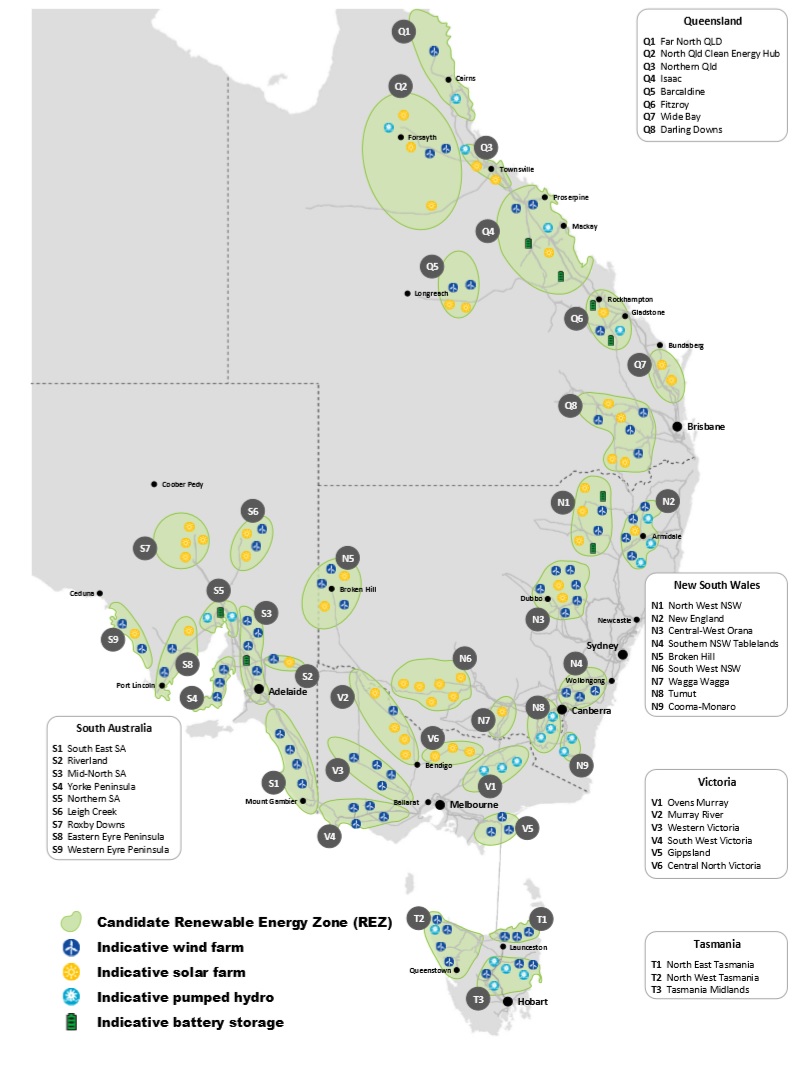The development of large-scale Renewable Energy Zones (REZs) is required prior to the expected retirement of power stations from the late 2020s and mid-2030s. The updated national roadmap for energy generation over the next 20 years (AEMO’s 2020 ISP) includes further assessment of Renewable Energy Zones – regions with rich renewable energy generation resources. There are 35 REZs across the National Electricity Market. Tasmania has three Renewable Energy Zones: in the North East (T1), North West (T2), and the Midlands (T3).
So what makes Tasmania’s Renewable Energy Zones so special?
T2 and T3 are two of only four Renewable Energy Zones across the national grid that have the best rating for wind generation potential (the others are in Far North Queensland and North Queensland). In fact T2, covering the Cradle Coast, is the only Renewable Energy Zone that has the best rating for wind resource, and temperature hazard, and bushfire hazard. The only Renewable Energy Zones that have the best rating for temperature hazard are the three Zones in Tasmania.
Tasmania’s wind occurs at different times to wind in other states, particularly Queensland, New South Wales and South Australia. Diversifying when wind is produced by producing it across different regions reduces network congestion and volatility. T2 and T3 are two of only seven REZs with potential for long duration (deep) pumped hydro, the others being in western NSW and central Qld. The are no REZs with long duration pumped hydro potential in Victoria. Long duration storage will be needed to supply energy during long periods of low wind and solar generation.
The National Electricity Market is a long and sparsely connected power system, with concentrated load centres that are distant from one another.
The network was primarily designed to connect large centres of thermal and hydro generation to major demand centres some distance away. Although there is already 8.7 GW of wind and solar installed across the network and another 5.1 GW expected to be operational in the next two years, Australia will need an additional 34 to 47 GW of new wind and solar generation installed within the next 20 years.
You can find out more about Renewable Energy Zones here
Image: AEMO 2020 ISP

